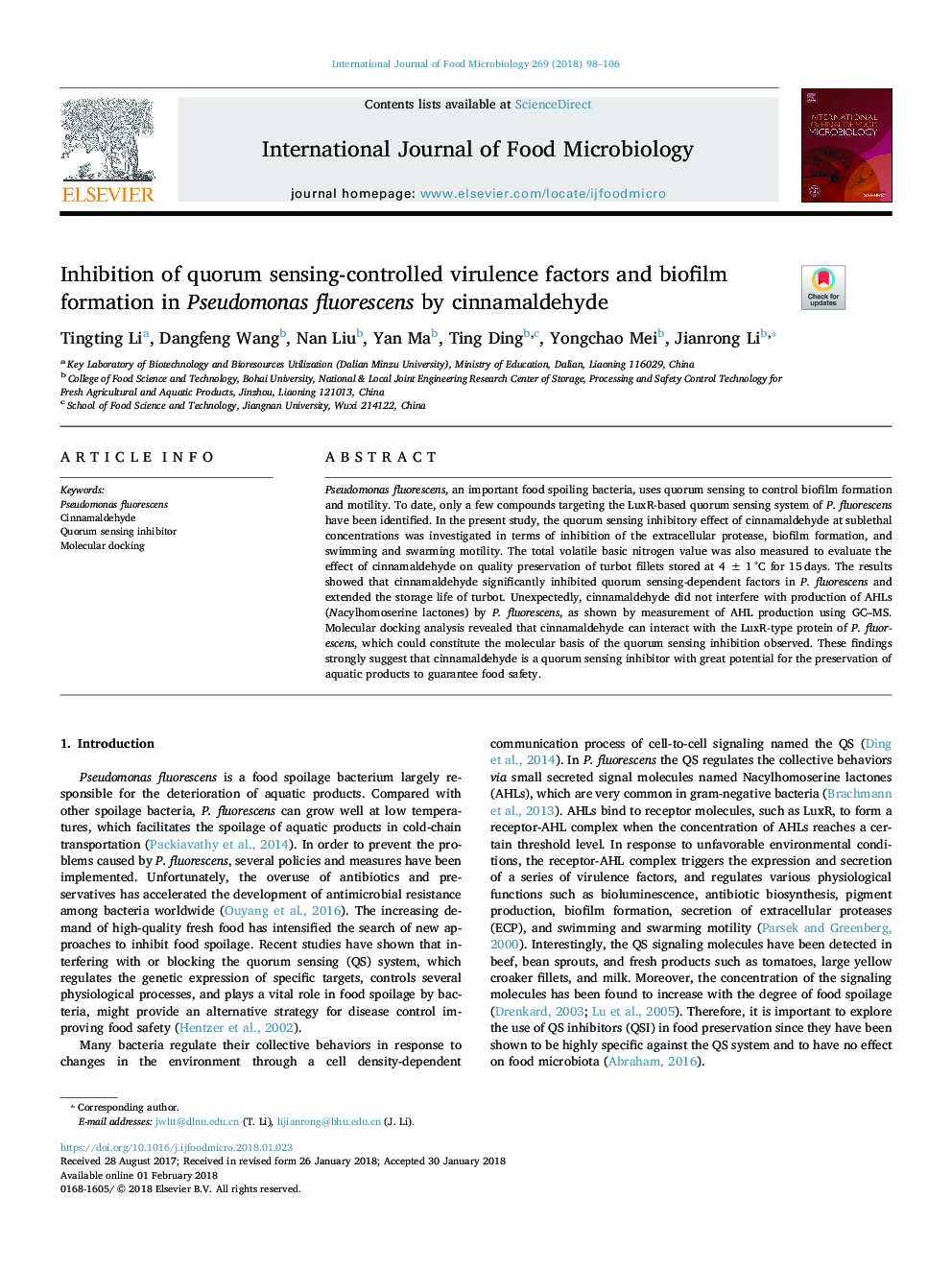| Article ID | Journal | Published Year | Pages | File Type |
|---|---|---|---|---|
| 8844270 | International Journal of Food Microbiology | 2018 | 9 Pages |
Abstract
Pseudomonas fluorescens, an important food spoiling bacteria, uses quorum sensing to control biofilm formation and motility. To date, only a few compounds targeting the LuxR-based quorum sensing system of P. fluorescens have been identified. In the present study, the quorum sensing inhibitory effect of cinnamaldehyde at sublethal concentrations was investigated in terms of inhibition of the extracellular protease, biofilm formation, and swimming and swarming motility. The total volatile basic nitrogen value was also measured to evaluate the effect of cinnamaldehyde on quality preservation of turbot fillets stored at 4â¯Â±â¯1â¯Â°C for 15â¯days. The results showed that cinnamaldehyde significantly inhibited quorum sensing-dependent factors in P. fluorescens and extended the storage life of turbot. Unexpectedly, cinnamaldehyde did not interfere with production of AHLs (NÂacylhomoserine lactones) by P. fluorescens, as shown by measurement of AHL production using GC-MS. Molecular docking analysis revealed that cinnamaldehyde can interact with the LuxR-type protein of P. fluorescens, which could constitute the molecular basis of the quorum sensing inhibition observed. These findings strongly suggest that cinnamaldehyde is a quorum sensing inhibitor with great potential for the preservation of aquatic products to guarantee food safety.
Related Topics
Life Sciences
Agricultural and Biological Sciences
Food Science
Authors
Tingting Li, Dangfeng Wang, Nan Liu, Yan Ma, Ting Ding, Yongchao Mei, Jianrong Li,
